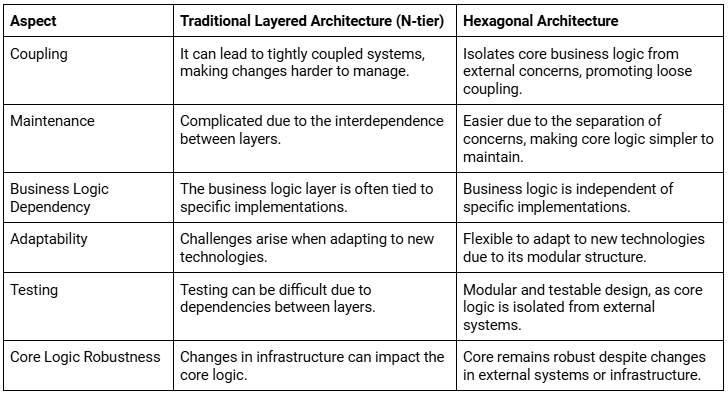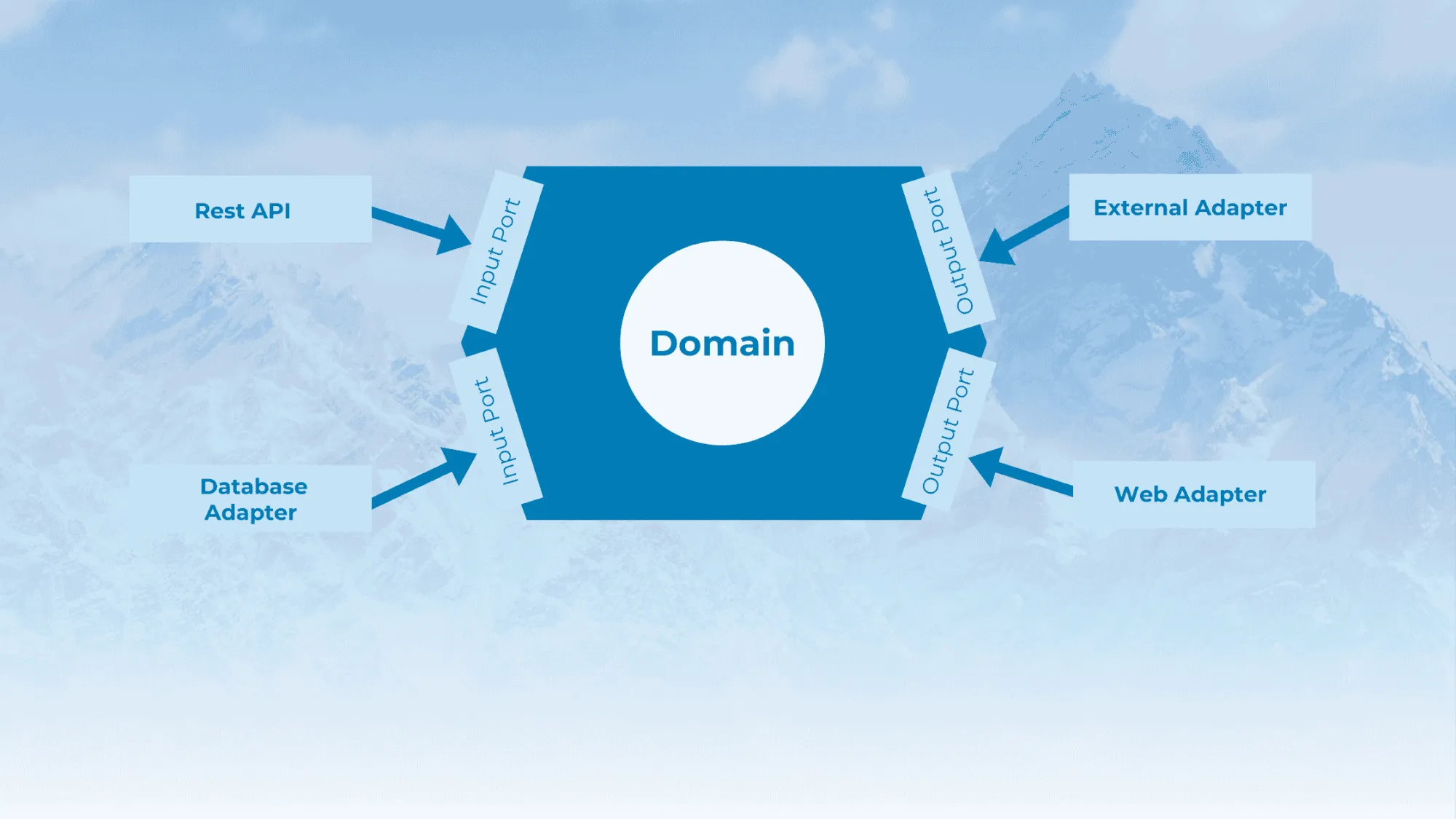Hexagonal Architecture, or Ports and Adapters, separates core logic from external elements, enhancing modularity, testability, and adaptability in software development. This blog delves into its principles, applications, and implementation to boost software robustness and scalability.
What is Hexagonal Architecture?
Hexagonal Architecture, introduced by Alistair Cockburn in 2005, separates core logic from external elements like databases and user interfaces, enhancing maintainability. The application’s core interacts through "ports," with "adapters" handling specific implementations. This decoupling ensures the core remains independent of technical choices, allowing changes to external systems without impacting core business logic.
Comparison with Traditional Layered Architecture

Core Principles of Hexagonal Architecture
- Independence from Frameworks: Keeps core logic separate from frameworks, using abstract interfaces (ports) and adapters for implementations, allowing easy changes without altering core logic.
- Testability: Facilitates testing by using ports for external interactions, enabling mock implementations to test core logic independently of external systems.
- Separation of Concerns: Establishes a clear boundary between core logic and external systems, allowing modifications without impacting the core.
- Ports and Adapters: Uses ports as abstract interfaces and adapters for implementations, enabling flexible changes in interactions with external systems without altering core logic.
Implementing Hexagonal Architecture
To learn more about implementing Hexagonal Architecture, we can look at an example of a simple To-Do List App.
1. Domain: The Heart of the App
The domain is the core logic, managing tasks independently of how they’re stored or accessed. It includes classes like Task (with properties like title, description, due date, and status) and methods such as markTaskAsCompleted or updateTaskDetails.
2. Ports: The Connection Points
Ports define how the domain interacts with external systems:
- Input Port: Interfaces like TaskService define methods (e.g., addTask or markTaskAsCompleted).
- Output Port: Interfaces like TaskRepository define methods (e.g., saveTask, getTaskById) for data storage.
3. Adapters: The Bridges
Adapters implement ports and handle external interactions:
- Input Adapter: For example, a TaskController processes HTTP requests and interacts with TaskService.
- Output Adapter: A DatabaseTaskRepository implements TaskRepository, handling data storage (e.g., MySQL or MongoDB). The core logic remains unchanged when switching storage solutions.
4. Putting It All Together: A Day in the Life of a Task
Here’s how everything fits together when a user interacts with the To-Do List app:
- User Interaction: A user sends a POST request to create a new task.
- Input Adapter: TaskController processes the request, converts it into a Task object, and calls addTask in TaskService.
- Core Logic: TaskService processes the request based on business rules.
- Output Adapter: TaskService uses TaskRepository to save the task, handled by InMemoryTaskRepository.
- Response: The user gets a successful response, unaware of the underlying storage.
Advantages of Hexagonal Architecture
Hexagonal Architecture offers several benefits that make it an attractive choice for building robust, maintainable, and scalable software systems. By decoupling core business logic from external concerns, it provides a flexible and adaptable framework for modern development. Key advantages include:
- Maintainability: Ensures cleaner, more maintainable code by decoupling core logic from external systems, allowing modifications through adapters without affecting the core.
- Scalability: Supports easy feature addition and load management by isolating core logic, enabling efficient resource optimization and smooth system scaling.
- Flexibility: Allows easy swapping of components like databases or APIs by modifying adapters, enabling seamless transitions without altering the core logic.
Challenges and Considerations
While Hexagonal Architecture offers substantial benefits, it also presents challenges that need careful consideration before adoption. Key challenges include complexity, potential overhead, and the cultural shift required within development teams.
- Complexity: Involves a steep learning curve and careful planning due to its layers of abstraction, which can make the codebase harder to navigate and require thorough documentation.
- Overhead: This may introduce unnecessary complexity for smaller projects, potentially leading to over-engineering in simple applications where the benefits of decoupling are minimal.
- Cultural Shift: Requires a shift in mindset for teams used to traditional architectures, emphasizing modularity, testability, and interface-driven design, along with training and support for successful adoption.
Conclusion
Hexagonal Architecture offers a robust structure for software, enhancing maintainability, scalability, and flexibility by decoupling core logic from external systems. Despite a learning curve, its long-term benefits make it ideal for building adaptable, scalable applications.
References and Further Reading
- Hexagonal Architecture by Alistair Cockburn - https://alistair.cockburn.us/hexagonal-architecture/
- Hexagonal Architecture on Wikipedia https://en.wikipedia.org/wiki/Hexagonal_architecture_(software)
- AWS Prescriptive Guidance for Hexagonal Architecture https://docs.aws.amazon.com/pdfs/prescriptive-guidance/latest/hexagonal-architectures/hexagonal-architectures.pdf
- Ready for Changes with Hexagonal Architecture - Netflix Tech Blog https://netflixtechblog.com/ready-for-changes-with-hexagonal-architecture-b315ec967749
